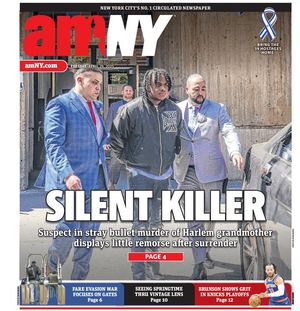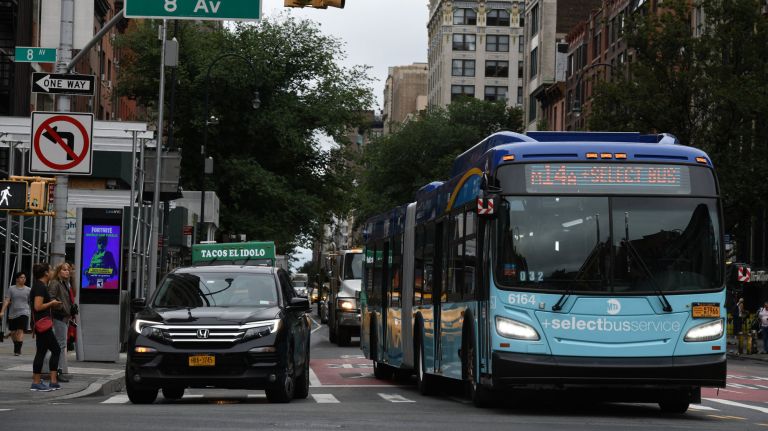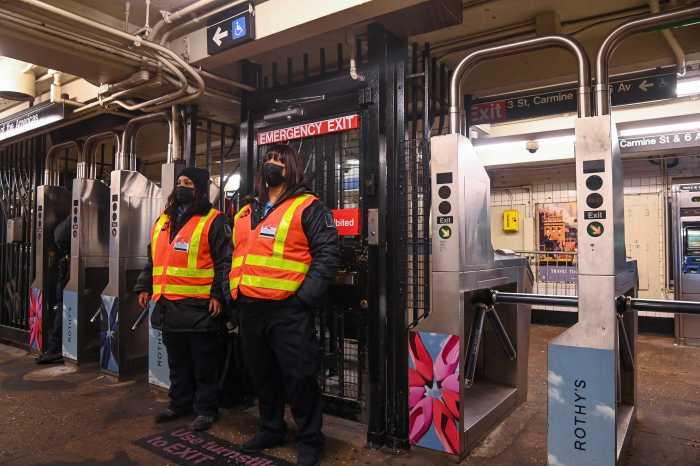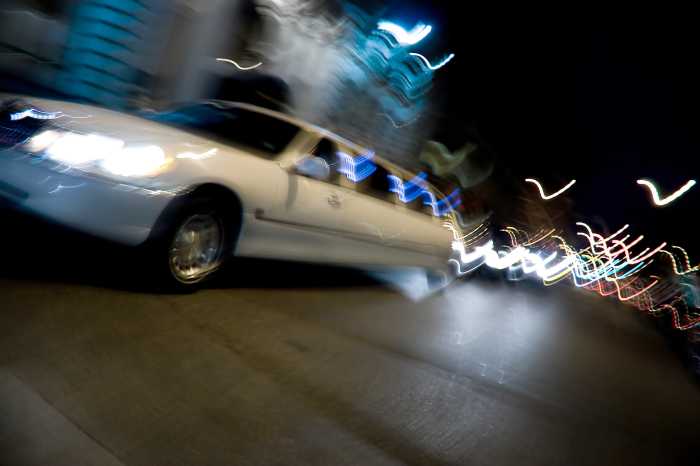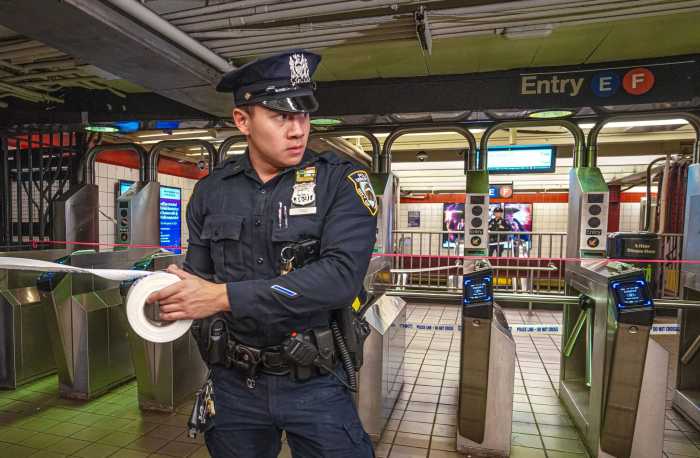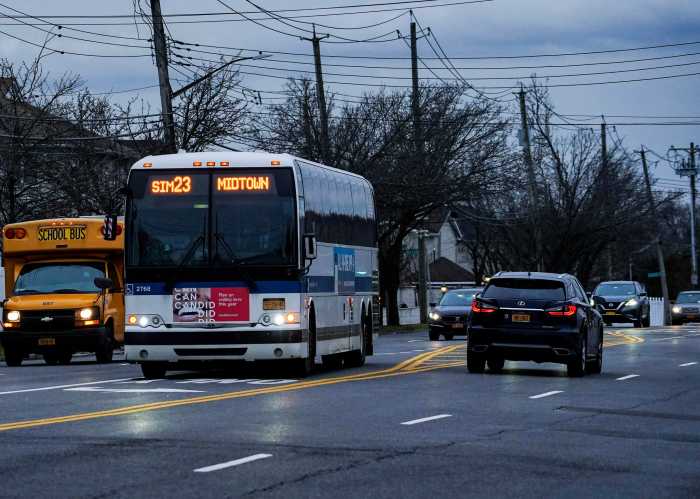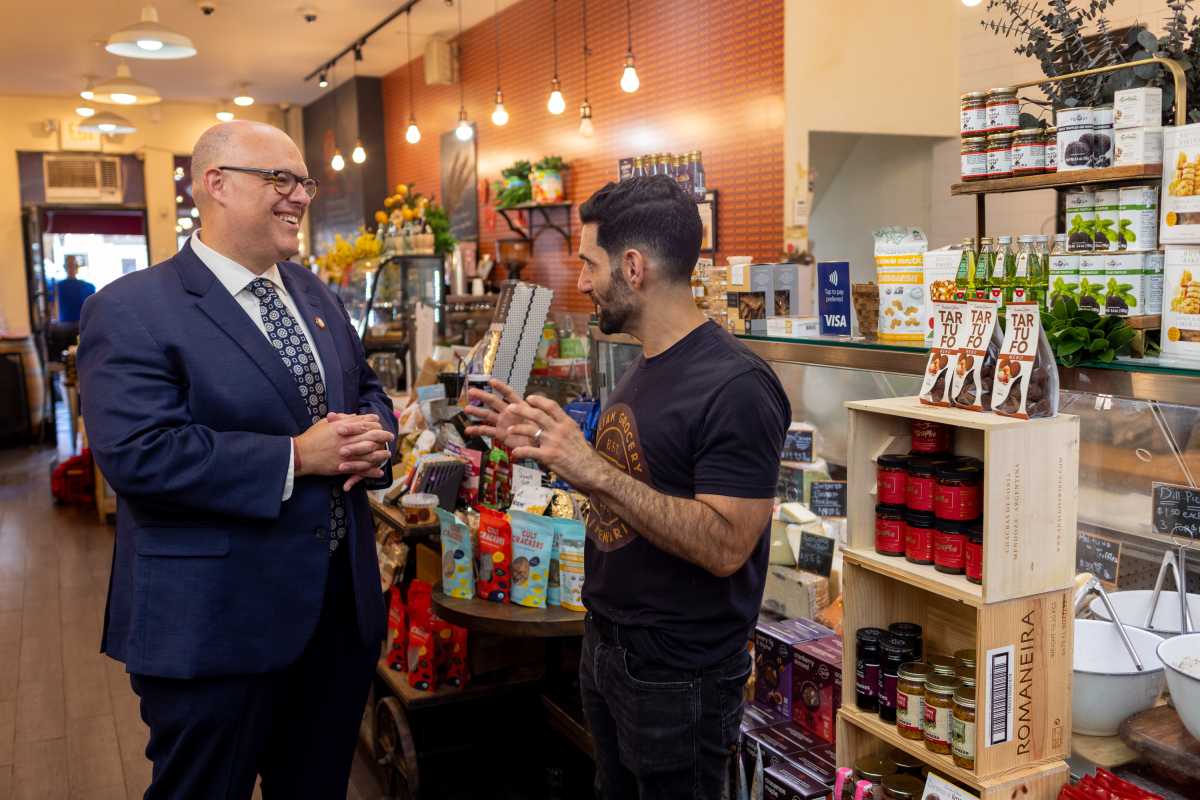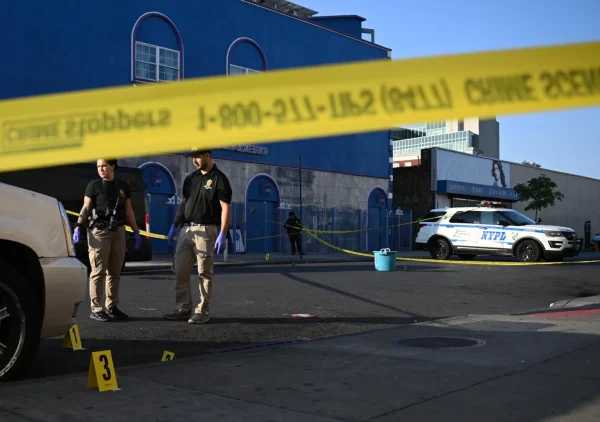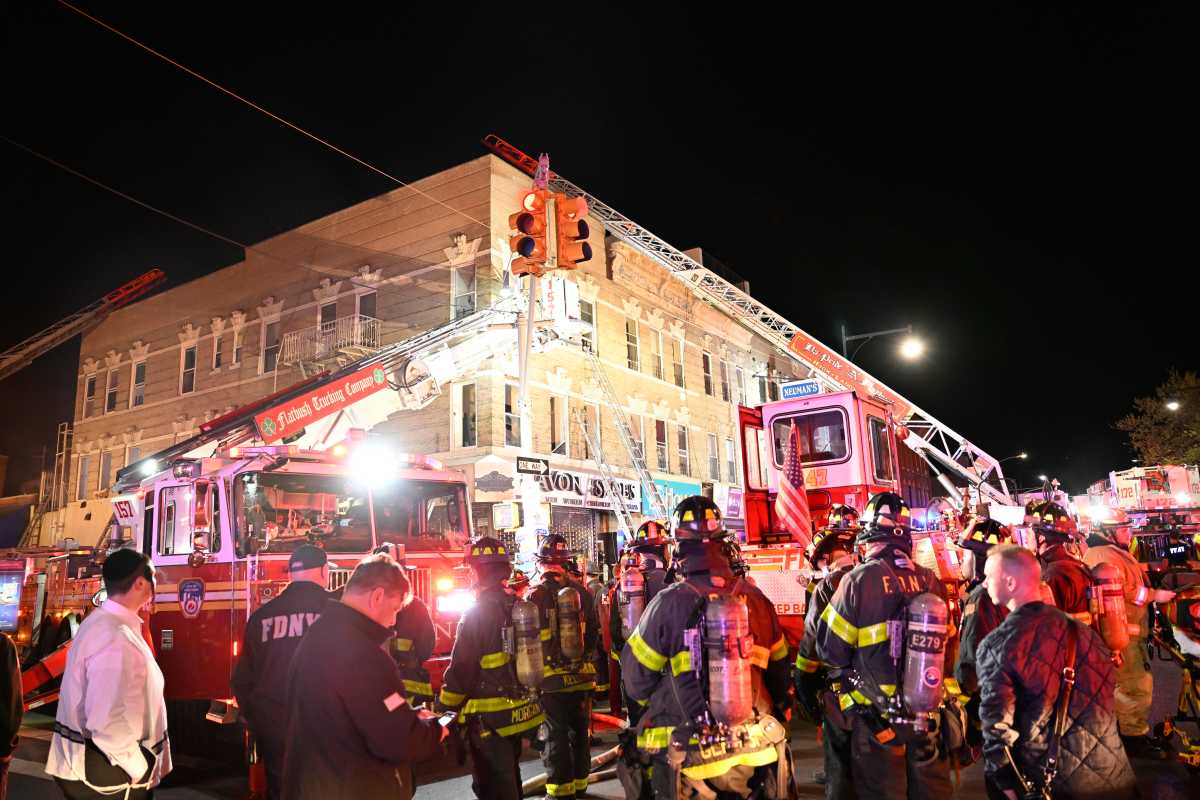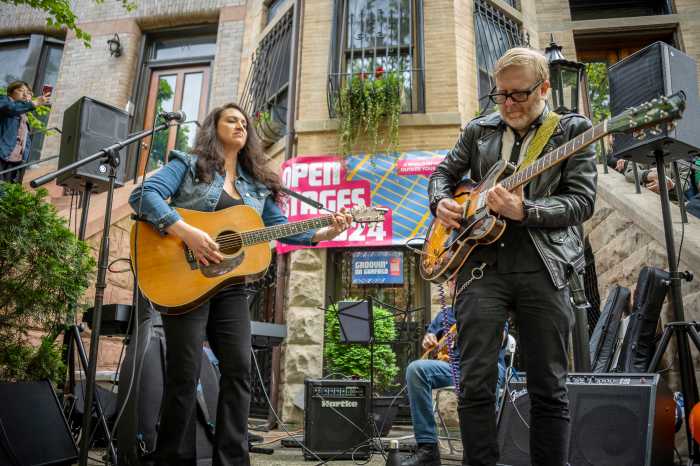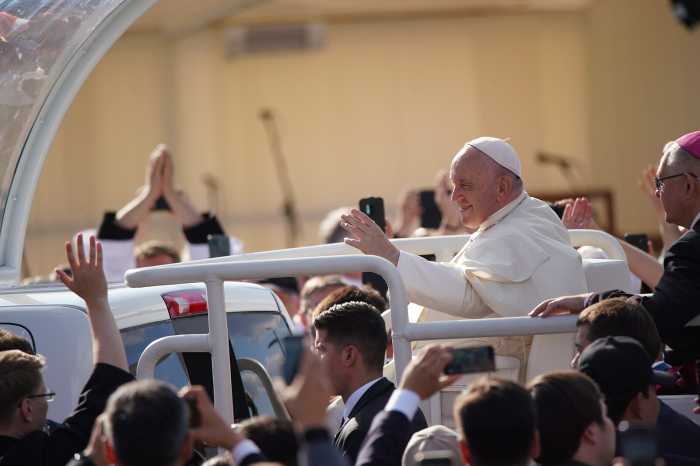
After being tied up in litigation for more than three months, the city and MTA’s plan to turn 14th Street into a busway is ready to roll Thursday.
Department of Transportation Commissioner Polly Trottenberg said she felt confident the 18-month pilot program will go smoothly — and could even be a preview of how traffic patterns shift when congestion pricing comes to Manhattan.
“This is a little bit of trial … of what might see when we implement congestion pricing in New York City,” Trottenberg said during a briefing near Union Square Wednesday.
Only buses and trucks will be able to make through trips between Ninth and Third avenues — between 6 a.m. and 10 p.m. — in an attempt to speed up bus service beginning Thursday morning. Automated enforcement cameras are being placed on buses and at each street corner and the police department will have traffic agents and officers out in full force — though summonses won’t start until after a 60-day grace period.
“The message is loud and clear: stay out of our bus lanes and out of our busway,” said Craig Cipriano, the senior vice president of MTA’s New York City Transit.
Bus ridership has plummeted by about 30% over the last five years — part of a larger trend in city transit trip declines — dropping from about 37,000 daily riders to about 27,000.
The new busway is expected to save riders an average of five minutes per trip.
A collection of block associations, led by local resident and attorney Arthur Schwartz, brought a suit against the city to fight the implementation of the busway as well as two related bike lanes installed on nearby streets. The groups have argued that the busway would destroy the historic nature of the neighborhoods around 14th Street and push a dangerous volume of traffic onto nearby side streets.
Trottenberg brushed off the concern, citing the 14th Street busway’s inspiration: King Street in Toronto, Canada.
“We see in other cities that the traffic sort of spreads itself out across the grid,” Trottenberg added.
Trottenberg said that the city would monitor the impact over the course of the 18-month pilot, noting that the project includes just an eight-block stretch of busway.
“In the grand scheme, compared to what other cities are doing, it’s still something pretty manageable in terms of scale,” Trottenberg said.
The busway was born out of the prospect of the L train shutdown, when advocates pushed the city to more ambitiously re-imagine the street running above the subway line to more efficiently move people.
“We are in the cusp of a climate crisis; we’re in the middle of a congestion crisis,” said Tom DeVito, director of advocacy at Transportation Alternatives, a nonprofit that pushed a new design for the street. “Our transportation systems are facing stresses … we’re going to need to see more projects like this going into the future.”
